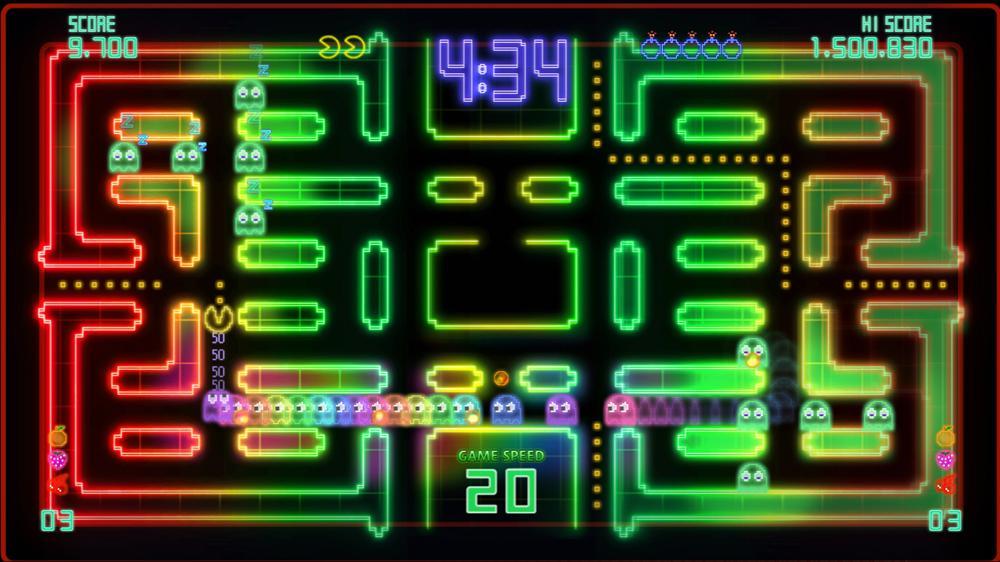It’s general wisdom that you shouldn’t mess with a known classic, usually for one of the following reasons:
- The game is so good that any attempts to improve upon it will merely fail.
- The game is so bad that it was merely tolerated, even if people have fond memories of it. Don’t mess with nostalgia.
Thankfully, Pac-Man Championship Edition DX (or PMCEDX for short—if you can call it short) isn’t a retread of old game mechanics, and it’s not the old Pac-Man game shoehorned into flashier graphics. It’s not even the previously-released and also-awesome Pac-Man Championship Edition in a new package.
PMCEDX is a whole new game, I love it, and you should too.
You can boil the basic gameplay of Pac-Man down to a few simple concepts:
- Eat dots to clear the board.
- Get chased by ghosts who try to reach your position at all times.
- Eat power pellets to change ghosts and eat them to huge points.
What PMCEDX does, is take these gameplay concepts and crank them up using a little Geometry Wars-style sound and flashiness. As in Pac-Man Championship Edition, you are eating dots on each half of the board to clear it. When you clear one half of the board, a fruit appears in the other half. Eat the fruit, and the maze on the cleared side regenerates, with a new maze layout and refreshed dots and power pellets.
Easy enough, right?
In the basic Championship Mode, there are also “sleeping” ghosts (you can see them as green in the shot above). When you pass them, they wake up and then begin to follow you in a line that trails behind you and constantly tracks you. When you finally do grab a power pellet, you can turn around and immediately begin tearing into the ghosts behind you, creating very long chains of point values, up to 3200 points for each ghost you eat.
What makes it challenging is trying to find just the right path to take to maximize the ghost eating and improve your score. In the base game, you have only five minutes to score as many points as possible and end up on the leaderboards. You’re given lives, but the score you rack up will take care of that problem—and that’s if you get touched by a ghost when you play. You’re also given bombs that will get you out of a tight spot, like when a ghost has you cornered (because the four normal ghosts are out in addition to the conga line behind you). They’ll bounce the ghosts away, but the downside is that they will bounce the ghosts away, which stops your chain and makes you waste precious seconds not building the chain behind you or destroying the ghosts by turning the tables.
The time limit, the increasing speed of the game as you play, and the pumped house-style music all combine to create tension and provide pressure to do better each successive time you play the game.
There’s something really endearing about games where the only enemy is yourself. You know how the game plays, you know what a good score is thanks to the leaderboards, and you know each time you lose that if you’d shaved that one corner a little faster or you hadn’t had to juke out that one ghost, you could have scored just a bit higher.
And if you mess up, it’s no one’s fault but your own. Restart and try again.

